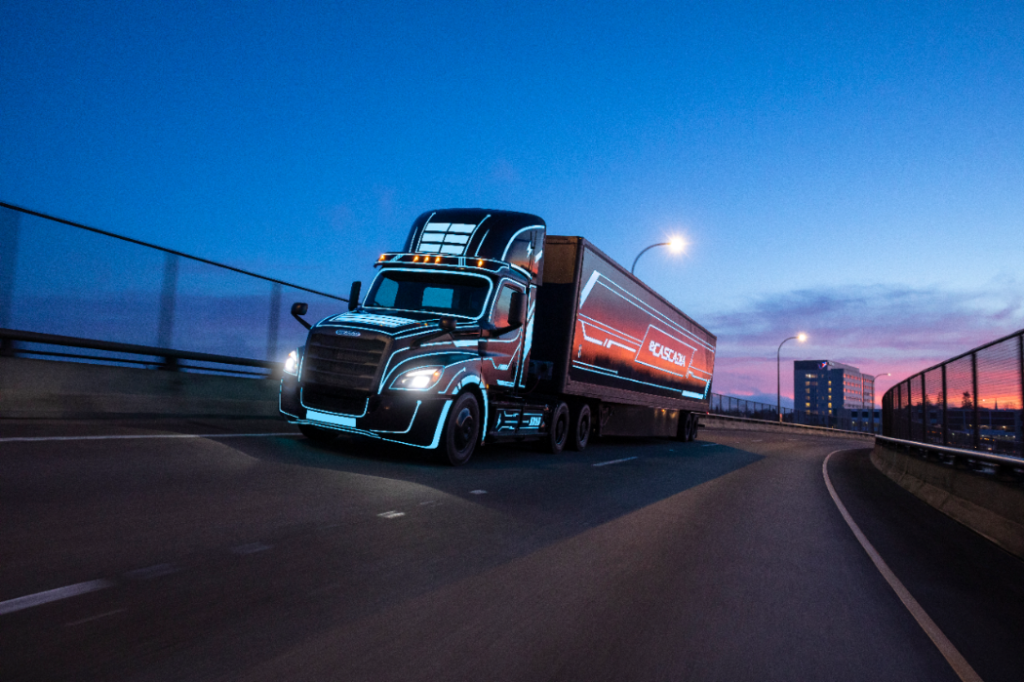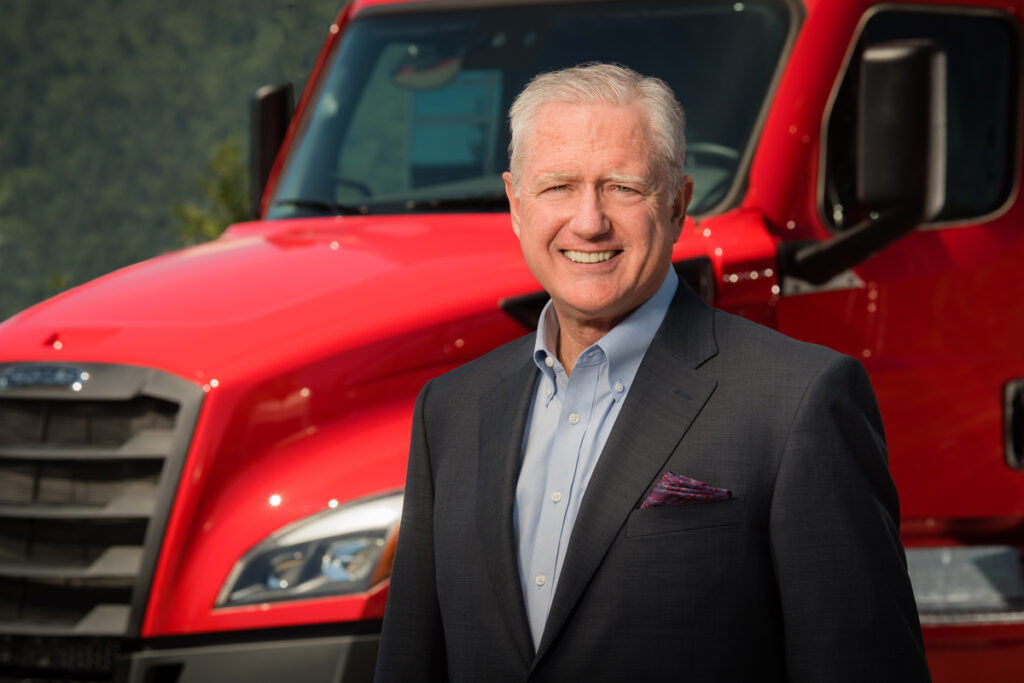Broad EV rollouts constrained by infrastructure challenges: Daimler Truck CEO
Battery-electric trucks may be ready for their moment in the sun, but widespread rollouts continue to be constrained by the struggles to establish related charging infrastructure.
“Overwhelmingly, infrastructure is slowing us down in terms of EV [electric vehicle] deployment,” Daimler Truck North America president and CEO John O’Leary said during a Jan. 31 media briefing. “Siting, permitting, construction delays – all that means current lead times are measured in years, not weeks or months.”
The OEM already has the capacity to build about 2,000 electric trucks a year, and can “rather quickly” ramp that up to 4,000 units, he said, noting that Class 8 Freightliner eCascadia models are already in service at fleets such as Schneider, Sysco, Meijer, UPS and Penske.
But its overall total of electric trucks in the field is closer to 100 units. Even when customers see success with the first two or three electric models, the fleets don’t have a way to charge larger volumes like 50-100 trucks.

Daimler is doing what it can. An internal consulting group continues to guide fleets around the infrastructure planning, whether that involves securing permits or sourcing construction companies that can deal with the chargers. And beyond the fleet fence, the company is also partnering with BlackRock Renewable Power and NextEra Energy Resources to develop public charging infrastructure, and is in the midst of choosing a team to lead that work.
Other electric trucks are coming, too. The medium-duty eM2 will be officially launched at the coming ACT Expo, and aligns well with P&D and final mile applications, he said.
Diesel still dominates
Just don’t sound the death knell for diesel quite yet.
“Diesel will remain the dominant propulsion choice for the foreseeable future. It remains the most cost-effective and efficient way to move goods and people, and we’re far from done with it,” O’Leary said.
Daimler Truck, for example, is already collaborating with Cummins on medium-duty engines for the years to come.
There are opportunities to enhance diesel-powered engines, too. The OEM is among those participating in the second round of the U.S. Department of Energy’s SuperTruck initiative that is looking to push the limits of underlying technologies.
“The SuperTruck program pushes the envelope and allows us to take high-risk chances on ideas,” he said.
Many of the engineering gains realized through the first phase of the program have already led to real-world gains in engine thermal efficiency, integrated powertrain offerings like downspeeding, and predictive powertrain controls.
“That doesn’t mean we’re not committed to zero emissions,” he stressed. “It’s going to be both, at least until 2039, when we announced that we will be out of the diesel business.”

Hydrogen fuel cells
There will be a path for hydrogen, too. Daimler has a joint venture with Volvo to develop fuel-cell-electric technology. And while Europe is 12-18 months ahead of North America when it comes to adopting fuel-cell-electric trucks, discussions here are “accelerating”, O’Leary said, adding that the company is also looking at hydrogen as a combustion fuel.
“We will have a fuel cell product. Absolutely. By the end of the decade.”
Like battery-electric trucks, though, there will also be infrastructure-related challenges here.
“Ultimately, hydrogen is very similar infrastructure to what we have today with diesel … when it’s all built out,” he said. “But that takes time and a lot of money.”
Establishing a hydrogen generating station is also decidedly more complex than installing an electric charger.
Supply chain challenges for manufacturers
As for the immediate future, there are still delays for those who are waiting for diesel-powered equipment, largely because of supply chain restrictions linked to the underlying components.
“We weathered immense headwinds in the supply chain but still delivered 186,770 units,” he said of 2022.
Widely publicized chip shortages have eased, and in some cases Daimler has even reduced the number of microprocessors needed in specific vehicle models. These days the OEM can also source 90-95% of the chips that it orders, leaving just a small share to be found through brokers and other third-party suppliers.
The supply chain challenges have not ended there, however.
“I don’t want anybody to think that’s gone away,” he said. “Going into the end of [2022], frame rails were tough, tires were tough, wheels were tough, brakes were tough.”
Those shortages have eased because the holiday break gave suppliers some time to catch up to demand.
“Then the question becomes, is it sustainable?” he says. “We’ll see how that goes, but I would say we’re off to a pretty strong start in January.”
That will be good news to fleets that have had to extend trade cycles and accept the higher maintenance and operating costs which come with older equipment.
“There’s a big pent-up demand out there,” O’Leary said. “It’s the underpinning behind the feeling that this year is going to be as strong as it’s going to be.”
Have your say
This is a moderated forum. Comments will no longer be published unless they are accompanied by a first and last name and a verifiable email address. (Today's Trucking will not publish or share the email address.) Profane language and content deemed to be libelous, racist, or threatening in nature will not be published under any circumstances.